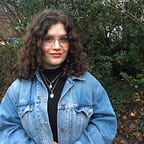World Ankylosing Spondylitis Day — the toll of waiting for a diagnosis
Today is World Ankylosing Spondylitis Day, and I am tired.
Ankylosing Spondylitis (AS) is a form of inflammatory arthritis which primarily affects the spine but involves many other parts of your body. For me, most of my joints are impacted by severe stiffness and chronic pain. AS also commonly comes with other illnesses like IBD/Crohn’s, or psoriasis. It can feel like an all-encompassing disease.
I started developing symptoms of AS when I was thirteen. I had severe lower back pain which stopped me from walking. Should you be watching a TV hospital drama, the young, terrified patient comes into the hospital and the loving medical team does all they can to find the treatment and cure. The patient leaves the clinic glowing and better.
That’s not how it worked for me. I begged doctors to pay attention to me, to the fact that I was so tired, so stiff, in so much pain. But it was because I wasn’t doing my stretches well enough, or because I wanted attention.
“It’s all in your head” said one rheumatologist.
It took six years to finally be diagnosed with ankylosing spondylitis. By the time I was diagnosed, I was absolutely exhausted. Relieved to have a diagnosis — sure, but broken by my teenage years being underpinned by such life-changing rejection.
I’m not alone in this. People wait an average of 8 years for a diagnosis of AS, and this wait is horrific to not just your physical health, but also your mental health. It can, truly, ruin your life.
Who can be diagnosed with arthritis has to change. Even at the big old year of 2021, we still hear “arthritis” and think of an elderly person whose life revolves around being the embodiment of a creaky door. Rather, it can be anyone. I’m an active, relatively successful, very busy and sociable person in my early twenties. I also have severe arthritis that impacts my everyday life. Those two should no longer be seen as mutually exclusive.
Should that change happen, should the stereotypes change, it might be that fewer young people have to wait so long to have their pain paid attention to.
There is no cure for AS, and at 22, my outlook on life runs along the lines of ‘everything is going to hurt, so I might as well do what I love and just ache later’. That helps me be realistic — but not the overwhelmingly positive person people want me to be. I won’t be an inspiration with this, I won’t be a glowing poster child of girlboss-who-overcomes-her-sad-disability. I will be a sick, successful person who is in constant pain.
The theme for this year's world AS day is mental health, and generally, the approach to this is to say the “we can do this!” approach. And whilst we can, of course — and should shout that from the rooftops — I want to represent the realistic element of living with a chronic illness.
I’m exhausted. Having lost the best part of a decade to fighting for an AS diagnosis (as well as help for a separate problem), I’m now passionate about making noise, but also still quite scared. I don’t like going to the doctors anymore, I want to stop having to be my own biggest advocate and just have people believe the pain is real.
I’ll get better in this. I’ll heal from the damage those doctors did and I’ll continue learning to love myself and the creaky body I’ve been given.
